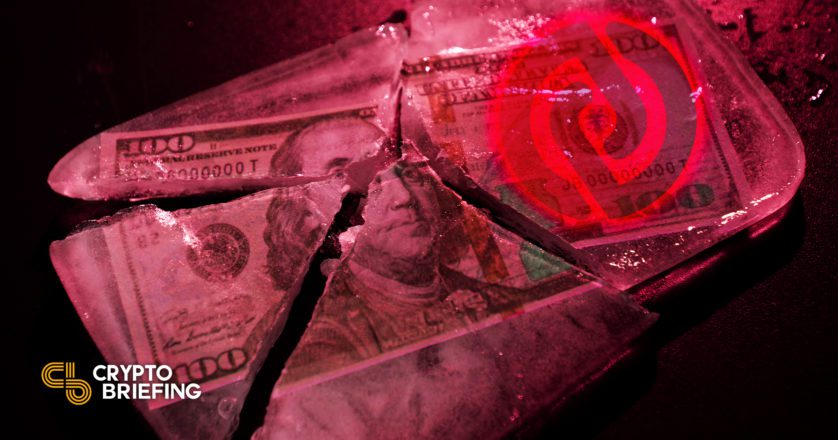CoinFLEX Halted Crypto Withdrawals. Now It Wants to Sell Its Bad Debt
The exchange is flexing “tokenization” as a solution to its current liquidity problems.

Key Takeaways
- CoinFLEX plans to raise $47 million by tokenizing its bad debt and selling it to non-U.S. sophisticated investors.
- The new token, dubbed "Recovery Value USD" (rvUSD), would yield a 20% annual interest rate and give holders a claim against the firm's debt assets.
- Last Thursday, the crypto exchanged paused customer withdrawals after facing liquidity issues due to a client failing to meet a $47 million margin call.
Share this article
CoinFLEX plans to sell $47 million worth of high-yielding tokens to recoup missing funds and resume withdrawals after a trusted client failed to meet a margin call last Thursday.
CoinFLEX to Raise Missing Funds Via New Token
CoinFLEX has come up with a novel solution to its recent liquidity issues.
The crypto lender announced Monday that it plans to raise funds by tokenizing its bad debt and selling it to non-U.S. sophisticated investors. Per the announcement, the exchange would aim to raise the missing $47 million—owed by a long-time customer that failed to meet a margin call—by issuing new tokens yielding a 20% annual return.
Last Thursday, the Hong Kong-based crypto exchange suspended customer withdrawals citing “extreme market conditions” and “continued uncertainty involving a counterparty.” The unnamed counterparty, which the exchange underscored was not the distressed crypto hedge fund Three Arrows Capital or any lending firm, had reportedly gone into negative equity while failing to honor its $47 million debt.
CoinFLEX explained that under normal circumstances it would automatically liquidate insolvent positions. However, in this case, the exchange couldn’t because the debt belonged to a “high integrity person of significant means” who was previously given a non-liquidation recourse account. This means the account holder had pledged “stringent personal guarantees” in exchange for not being liquidated.
“As a solution toward re-enabling withdrawals, CoinFLEX is planning to monetize this personal guarantee by creating a corresponding liability in the form of a token called Recovery Value USD (rvUSD),” the exchange stated Monday. Per the token’s whitepaper, the debt repayments from CoinFLEX’s client would be converted to USDC, with rvUSD holders able to convert their tokens for USDC on a pro-rate basis as new repayments are made. The rvUSD tokens, available only to non-U.S. sophisticated investors, would also yield an annual interest rate of 20%, paid out daily.
Explaining the proposition in a Monday interview with Bloomberg, CoinFLEX CEO Mark Lamb said that the new offering is a way for the firm to use tokenization to solve its debt problem. He stated:
“We wanted to make it such that the assets all match up, and everything matches up, in a way where it’s market based, and we pass on this risk to investors that understand this risk and are eager for this risk, and basically solve the problem.”
CoinFLEX’s current liquidity problem comes amid a broader wave of liquidations and solvency issues facing the crypto industry. Earlier in June, the crypto lender Celsius, reportedly eying a potential bankruptcy filing, paused withdrawals and internal transfers, citing “extreme market conditions.” Only four days later, on Jun. 17, the Asia-based crypto lender Babel Finance also paused withdrawals, citing “unusual liquidity pressures” that likely arose from the alleged blowup of the now infamous crypto hedge fund Three Arrows Capital.
Disclosure: At the time of writing, the author of this piece owned ETH and several other cryptocurrencies.
Share this article
